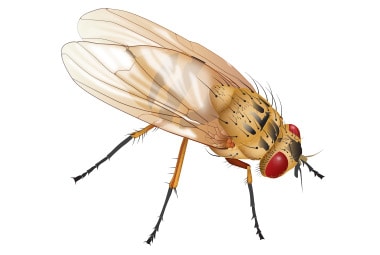
Cluster flies are also known as attic flies. Cluster flies enter into homes in large “clusters” in the late fall while searching for a place to overwinter. They gather in the upper levels of homes and other buildings including attic spaces and behind walls.
| Pest Identification | |
|---|---|
| Recognition | Cluster flies look very similar to a common house fly, but are a bit bigger and more sluggish. Adults grow to be 3/8th- ½ of an inch in length. Their bodies are gray in color with some darker black markings. Cluster flies are not metallic in appearance like house flies but instead have yellowish-gold hairs on their thorax and legs. |
| Biology | The life cycle of the cluster fly begins when the female lays her eggs in the cracks of soil during the summer months. The eggs hatch after about three days and the larvae then enter into an earthworm and develop within them. After pupating they emerge from the earthworm as an adult. The new adults then search for a suitable place to overwinter, either inside homes, sheds or garages, in between the cracks of rocks, or underneath a dead or dying tree. The adults then emerge in the spring and can be found outside clustering around flowers or fruit. |
| Damage | Cluster flies are mostly considered to be a nuisance to have overwintering within your home. On warm sunny days they emerge from attics or behind walls and fly and gather around windows, light switches, ceiling fixtures, door or window frames, and skylights in your home. They may give off a foul smell and leave behind a grease spot if they are squished. If you find cluster flies in your home the best way to eliminate them is by using a vacuum cleaner to remove them from your home’s walls and other surfaces. |
| Prevention | The best way to prevent a problem with cluster flies is to fix areas on the exterior of your home that allow them to easily enter in. Make sure that screens are completely intact, gaps around windows or doors are caulked. All exterior vents should be covered with mesh screening. Damaged roof shingles should be replaced and seal any cracks in your home’s foundation. |
| Professional | Rottler technicians control cluster flies by applying a highly repellent, long-lasting residual liquid insecticide to structural junctures on all outside vertical walls and the adjacent overhangs. This application is made just before the last seasonal generation of adults emerge from the ground. If adults have already started to gather on your home’s exterior walls, preventative control measures will most likely have to wait until the next year. |

